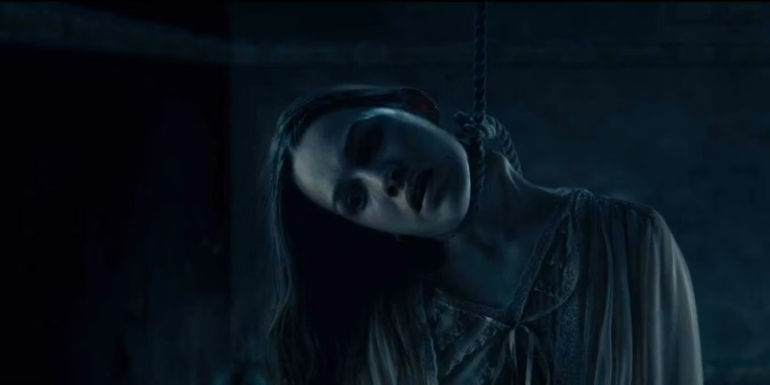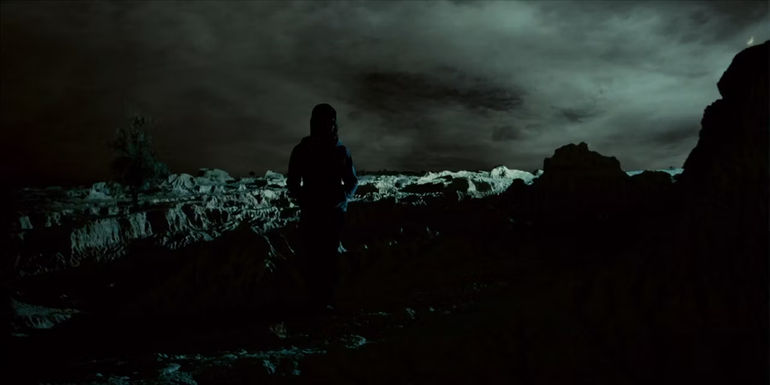
The Chilling Twist in The Haunting of Hill House and Its Connection to Lake Mungo

Exploring the eerie parallels between a haunting twist in The Haunting of Hill House and a chilling scene from the indie horror film Lake Mungo, along with the impact of Lake Mungo on acclaimed filmmakers like Mike Flanagan, Justin Benson, and Aaron Moorhead.
The Haunting Of Hill House's Bent-Neck Lady Twist Parallels Lake Mungo's Scariest Moment
One of the best twists in a Mike Flanagan Netflix show seemingly recreates a chilling scene from a 15-year-old obscure horror movie. Most of Mike Flanagan's works are either direct adaptations of horror novels or loose contemporary interpretations of a horror author's works. While he also has a few original movies like Hush under his belt, some of his most popular films and shows like The Haunting of Hill House, Midnight Mass, Gerald's Game, and The Fall of the House of Usher are adaptations.
The Bent-Neck Lady in The Haunting of Hill House
However, apart from merely adapting books, short stories, and poems, the horror auteur meticulously creates narratives that brim with subtle references and nods to an array of cinematic influences, horror tropes, and literary traditions. Something similar can be noticed in perhaps the most chilling twist from one of his best Netflix TV shows. The twist is not only reminiscent of a terrifying scene from an indie horror film but also draws upon the intricacies and parallels found in well-written horror.
A landscape in Lake Mungo
In The Haunting of Hill House, young Nell (Victoria Pedretti) is constantly haunted by a ghost with a distorted neck. She names her the 'Bent-Neck Lady' because of her terrifying appearance. After Nell grows up, her husband Arthur dies from an aneurysm on an unfortunate night, and Nell fails to save him because of her sleep paralysis. As her grief surrounding Arthur's demise gets worse, she starts believing the Bent-Neck Lady was responsible for Arthur's untimely death. When she returns to her childhood home where she first started seeing the bent-neck lady, the haunted house gives her a vision of her mother, Olivia, putting a locket around her neck.
A family at their house in Lake Mungo
However, while experiencing this vision, Nell unknowingly puts her noose around her neck and falls down the house's staircase before dying. As she falls, the past merges with the present and The Haunting of Hill House reveals that she was the bent-neck lady all this while. The Australian horror movie, Lake Mungo, presents a similar twist in its closing arc where the central character, Alice, sees her own ghost a few days before drowning to death.
something in the dirt aaron moorhead and justin benson
The movie suggests that, like Nell, Alice was probably confused and terrified by what she saw, but probably understood everything when she died and the laws of time vanished in the afterlife. Considering how Mike Flanagan called (via Letterboxd) 2008's Lake Mungo 'one of the greatest independent horror films ever made,' it is possible that he drew some inspiration from the indie horror film. In his review, Mike Flanagan also specifically mentions one terrifying shot from the film that made him 'physically stand from' his couch, seemingly referring to the Alice ghost twist.
Mike Flanagan's The Haunting of Hill House is available on Netflix for streaming.
Two Other Acclaimed Filmmakers Also Drew Inspiration From Lake Mungo
Despite being relatively obscure, Lake Mungo has not only inspired Mike Flanagan but two other acclaimed horror filmmakers, Justin Benson and Aaron Moorhead. In an interview (via Screen Anarchy), Mike Flanagan, Justin Benson, and Aaron Moorhead briefly discussed how much they admire Lake Mungo and even recommended their audience to watch it. In another interview (via Filmmaker Magazine), Justin Benson explained how Lake Mungo and its fake documentary style of filming inspired him and Aaron Moorhead to create Something in the Dirt.
Although Something in the Dirt is thematically different from Lake Mungo, it adopts the horror movie's pseudo-documentary style. Like Lake Mungo, Something in the Dirt uses this fake documentary approach to explore the dangers of half-truths and the ambiguousness of death and morality. The fact that Joel Anderson's Lake Mungo inspired brilliant horror directors like Mike Flanagan, Justin Benson, and Aaron Moorhead proves that, regardless of how obscure a movie may be, its artistic and storytelling prowess can transcend its lack of visibility and leave a mark on other creative minds.
Sources: Letterboxd, Screen Anarchy, Filmmaker Magazine












